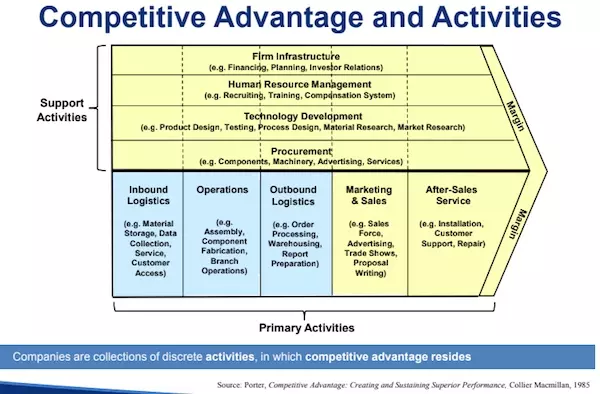‘Would you tell me, please, which way I ought to go from here?’ asks Alice when she meets the Cheshire Cat perched on a branch overhanging the path.
He answers, ‘That depends a good deal on where you want to get to’. This exchange in Lewis Carroll’s much-loved classic is a profound lesson in the importance of strategy. If you don’t know where your business is heading, it’s impossible to tell if your current strategy is right.
Often when we first start working with clients, we find they’re going round in circles. People get on the bus in their usual seats every morning. The bus sets off, drives around the block and ends up back where it started. There’s no sense of being on a journey, no sense of a final destination. They do it all again the next day. And the next. If this is scarily familiar to you, our advice is to take a step back. It’s time to look hard at your current strategy.
If you’ve been in business a while, it’s likely there’s some form of strategy. It might be implicit or explicit, but it’s there. You’re in a particular industry. You’ve got products or services to sell. Before you decide to change your approach, you need to acknowledge what your current position is and the assumptions that you’re working with. Because continuing with your current strategy is always one of your options. But you need to know if it’s leading you towards the growth you crave.
Intended Versus Serendipitous Strategy
There’s always an element of intended versus serendipitous in strategy. You start out with an intention but you might end up somewhere else. Some of the things you thought would happen don’t and then others do. Jim Collins talks about return on luck in his best-selling book, ‘Great by Choice’. He found companies that successfully scaled didn’t have any more luck than others. What they did have was an intended strategy. And they did things that gave them a return on that luck. In fact, they seized the right opportunities when they came their way. The emphasis here is on the word ‘right’. Only the opportunities that fitted with their strategy were worth seizing.
What we’re saying is that it’s likely things will change and won’t necessarily go as planned. But if you have a clear strategy, you can take advantage of these changes. Strategy is a unique set of activities. The aim is always to drive competitive advantage which shows up as profitability. And this profitability will give you more options. You’ll be able to borrow money or sell for a higher multiple. Whatever the outcome, you can take advantage of the luck that comes your way. Because your strategy should give you choices.
Is Your Strategy Really a Strategy?
Take a step back and look hard at your current strategy. Is it really that – a strategy? Or is it just a plan? At the start of their coaching journey with us, clients tell us they have a current strategy. But we find out it’s really just a plan to sell more stuff to indeterminate and seemingly random new customers.
Take my recent kick-off with a new client. I interviewed the executive team. Their company is growing, but they have no clear idea where they’re heading. There’s no core customer group and no clear marketing and sales plan to drive more net new customers. The company’s been in business for a long time and one of the directors asked me what I thought their biggest challenge was going to be. I said it would be shifting enough gears to develop a new approach. There’s a lot of entrenched behaviours that will need to change. And their challenge would be finding the time to do the new things. It’s a bit like ‘Couch to 5K’. To get up and start running, they needed to stop eating pretzels and watching TV!
Sometimes clients haven’t even thought about the space they’re in and their place in the industry. And even whether their industry is growing or shrinking. There may already be a major trend that’s against them. A good example is companies selling hosted VM Ware versus public cloud. That ship has well and truly sailed. Those people that you used to sell that thing to? They’re buying something else.
Any current strategy needs to be crystal clear on your individual sandbox. What’s your positioning within the industry? What are you going to be best in the world at? What are you truly passionate about? And will this drive your economic engine? We always come back to Jim Collins’ hedgehog concept. It’s vital to any successful strategy.
Are You Clear on Your Destination?
 Returning to the smiling feline in Wonderland, the most important question in your current strategy is where do you want to get to. What’s your desired outcome? Where do you want to be in future and what are you trying to do? This starts with a clear purpose. Knowing why this company exists. It’s also useful to have a longer-term BHAG (Big Hairy Audacious Goal) that provides an exciting vision of your destination. And then you need to know, 3 to 5 years out from now, where you think this BHAG lands you? You won’t know whether your current strategy is the right one unless you know what you’re trying to do.
Returning to the smiling feline in Wonderland, the most important question in your current strategy is where do you want to get to. What’s your desired outcome? Where do you want to be in future and what are you trying to do? This starts with a clear purpose. Knowing why this company exists. It’s also useful to have a longer-term BHAG (Big Hairy Audacious Goal) that provides an exciting vision of your destination. And then you need to know, 3 to 5 years out from now, where you think this BHAG lands you? You won’t know whether your current strategy is the right one unless you know what you’re trying to do.Once you have this clarity of outcome, you need to sanity check how you’re going to get there. What are the products or services you need and what’s the overall geography? It may not be as big a challenge as you think. When we work on the core customer piece with clients, we find they don’t need that many net new customers to hit their growth targets. They might currently have thousands of different customers. But once we’ve identified the core customers – the ones that will drive the most profitable growth – we find they only need a relatively small number. This is why core customer is so fundamental to any strategy. It will drive major decisions on your product/service mix and geography.
Is Your Current Value Proposition Right?
Any existing strategy needs a strong value proposition. It’s worth checking you haven’t come unstuck here. Often, value propositions are written from the perspective of the widgets you’re selling e.g. ‘Our product is better because of x, y and z’. Yes – your widgets may be amazing. But this doesn’t tell me what job they do for your customers. It’s something we see so often. We ask clients, ‘Why do people buy from you and not your competitors’ and they have no idea. Literally not a clue. Without this, their current strategy is going nowhere fast.
During our kick-offs, we ask clients whether they have any competitive advantage, and there’s a nervousness and a shuffling of feet. Eventually, they say ‘No’ apologetically. OK – well what about a measure of customer engagement like NPS ? The same blank look. There’s no clear idea of differentiation from competitors. This is when strategic convergence happens, something I covered in-depth in my last blog.
Assessing Your Value Chain and Finding Competitive Advantage
Here’s the thing with finding competitive advantage. The only way to do it is by positioning your business so that your customers are prepared to pay what they think is good value relative to your competitors. And then you’re able to extract more margin from them. You need to get to grips with your value chain.

Have a look at the slide above. Michael Porter defined companies as ‘a collection of discreet activities in which competitive advantage resides’. Ahead of producing an Activity Fit Map, we work through this looking at the different areas in a company. All firms are made up of a series of functions and departments. Our Functional Accountability Chart looks for important indicators for each of these core functions. It helps to find the line in the P&L or income statement that’s a lagging indicator for each function and then lays this out on the Key Function Flow Map. Then we work out leading indicators based on core competencies. Finally, we pull these out and use the Activity Fit Map to decide which ones are differentiators and which aren’t. Because it’s your differentiators that will give you a competitive advantage.
Finding True Differentiators
When we ask clients what they think their key differentiators are, they’re often wrong. As we start to populate the Activity Fit Map, we’re looking for the ones that complement each other. Where an improvement in one is correlated with an improvement in the other. These are your true differentiators – the things that set you apart. But so often, this is unclear.
The budget South West Airlines is a great example to use here. They built a value chain that was highly successful, leading to impressive growth in profitability. In their model, frequent reliable departures connected to 15-minute gate turnarounds. These in turn were connected to standardised fleets of 737s which correlated with low ticket prices. Like an interconnected set of cogs all turning together, this led to growth in their business.
Interestingly, when Continental Airlines launched their own budget airline, Continental Lite, to compete with South West, they only copied a proportion of these activities. And it resulted in abject failure. They copied enough to make it pointless and, even worse, Continental Lite had a negative impact on their core business. A complete ‘lose lose’ situation.
To sum up, if you’re assessing your current strategy, ask yourself these questions. What are you NOT going to do? What are you going to do differently to your competitors? What trade-offs will happen as a result? And how will you communicate these trade-offs internally and externally? Finally, and most importantly, take the advice of the Cheshire Cat. Make sure any current strategy is crystal clear on where you want to get to.





Leave your comments
Post comment as a guest